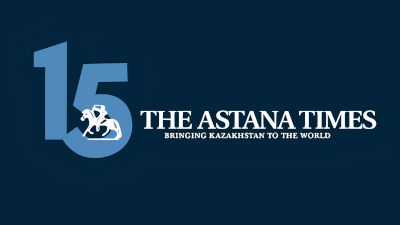ASTANA — Kazakhstan’s economy grew by 4.4% in 2024, driven by strategic measures to diversify the economy, attract investments and bolster domestic businesses. Government initiatives focused on expanding the non-oil sector, fostering a favorable investment climate, and supporting small and medium-sized enterprises (SMEs).

Kazakhstan’s non-oil sector fuels economic growth. Photo credit: Policy.ed.
Key economic indicators
According to Premierminister.kz, preliminary estimates reveal that more than 70% of economic growth stemmed from manufacturing, trade, agriculture and construction. Agriculture saw a 13.4% surge in gross output—the highest since 2011—while construction grew by 10.3%, trade by 8.2%, transport services by 8.1%, and communications and manufacturing by 5.3% each. Investments in fixed assets rose by 3.1%, reaching 15.8 trillion tenge (US$29,9 billion).
Foreign trade turnover for the year’s first 10 months reached $116.9 billion. Exports increased by 5.1% to $68.5 billion, with processed goods exports rising 10.2% to $23.3 billion. Key markets included China, Türkiye and the European Union, where exports diversified to countries including Ireland, Switzerland and France. Exports to China grew by 5.3%, reaching $12.3 billion, bolstered by Kazakh participation in major trade exhibitions and e-commerce platforms.
Services exports rose 10.5% to $8.4 billion this year, driven by transportation, IT, financial, and other business services.
Imports fell by 3.3%, contributing to a 33.4% increase in the positive trade balance, which reached $20.1 billion. Inflation declined, dropping to 8.4% in November from 10.3% in 2023.
Improved credit ratings and investment prospects
Moody’s upgraded Kazakhstan’s credit rating from Baa2 to Baa1 with a stable outlook on Sept.9. Fitch affirmed the country’s BBB rating on Nov. 15, also with a stable outlook, while S&P maintained its BBB-/A-3 rating and stable outlook on March 1.
These ratings enhance economic and financial stability, bolster the country’s international reputation, and positively influence the attraction of capital market investments and foreign direct investment. A higher credit rating also improves borrowing conditions in foreign markets.
Strengthening domestic production and SMEs
Government policies targeted domestic producers by limiting foreign participation in public procurement. In 2024, domestic procurement value rose to 51.8%, with contracts totaling 372.9 billion tenge (US$705 million)—a 34.4% increase from 2023.
Measures to support domestic producers have increased the share of small and medium-sized businesses in Kazakhstan’s economy by 1.8%, bringing it to 38.2%. The number of active SMEs now surpassed two million, employing over 4.2 million people. SME output increased by 19.1% in the second quarter, reaching 34.2 trillion tenge (US$65 billion).
Support programs, such as the comprehensive business development program, provided subsidies, guarantees, and grants for SMEs. Syndicated lending and new bond loan conditions further enhanced financing opportunities, fostering a competitive business environment.
This year, 14,500 projects were subsidized, involving loans of 840.5 billion tenge ($1.6 billion) and 226.2 billion tenge (US$428 million) of subsidies. Guarantees were issued for 7,300 projects, supporting loans worth 241.2 billion tenge (US$456 million). Additionally, syndicated lending, which enables multiple banks to finance large-scale projects of up to 15 billion tenge (US$28.3 million), has become another key support tool for SMEs.
To support social entrepreneurship, the government has introduced state grants of up to 5 million tenge (US$9,460) and subsidized interest rates of 7% on loans of up to 1.5 billion tenge (US$2.8 million), with no industry restrictions.
Digital transformation streamlines business processes
Kazakhstan advanced its digital ecosystem with initiatives such as the Digital Business Map and a personal business account system, which simplified administrative procedures. Nearly all public services (99.3%) were delivered electronically, and plans are underway to optimize 40% of business reporting by 2025.
Infrastructure development and investment expansion
The government collaborated with international financial institutions to implement the National Infrastructure Plan through 2029.
Cooperation is ongoing with organizations such as the World Bank, the Asian Development Bank, the European Bank for Reconstruction and Development (EBRD), the Islamic Development Bank and the Eurasian Development Bank. Partners provide technical and expert support to implement initiatives that foster growth and sustainable economic development. Key projects have included road modernization, school upgrades and renewable energy initiatives.
Additionally, six major joint projects are underway, with a loan amount of $3.74 billion and co-financing from the state budget of $611.7 million. The EBRD’s portfolio in Kazakhstan includes 125 active projects worth $2.95 billion, with the majority focused on sustainable infrastructure. Investments in the private sector account for 46%.
Additionally, this year has seen strengthened cooperation with the Islamic Development Bank and the Arab Coordination Group, which has expressed its intention to finance 30 infrastructure projects in Kazakhstan valued at over $7 billion.


